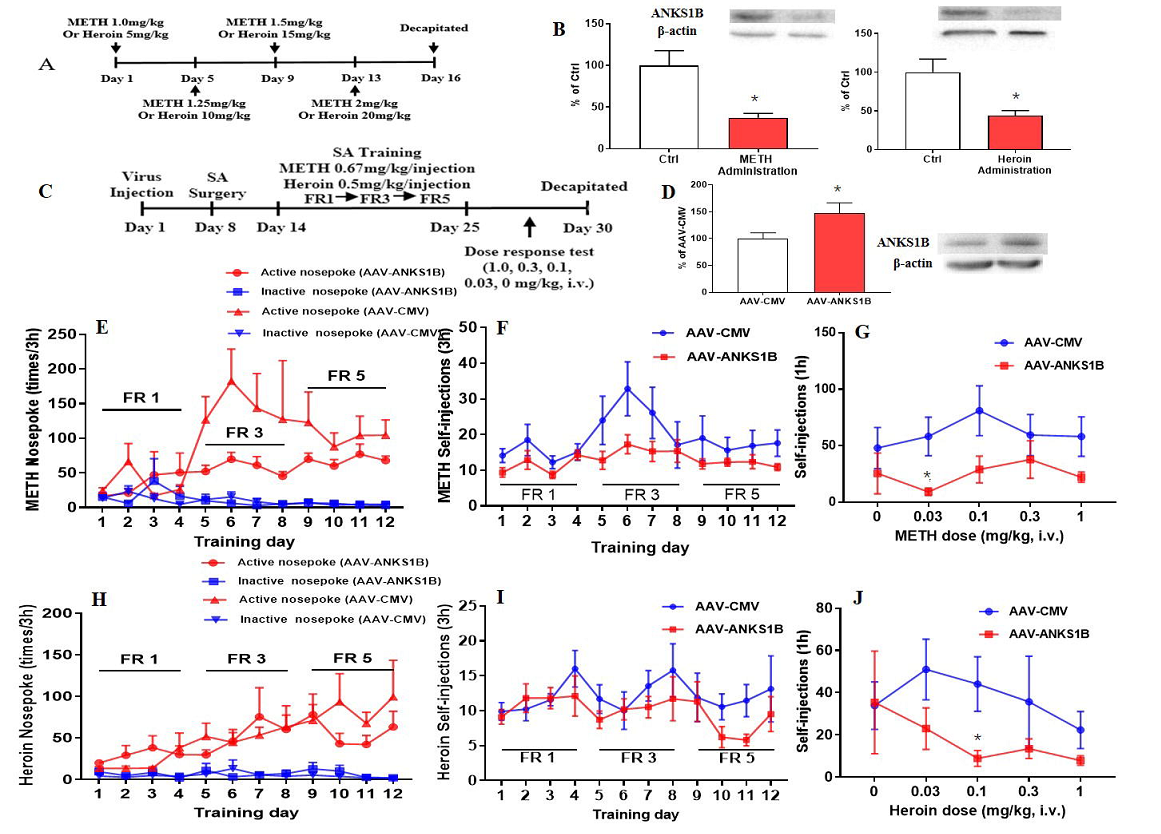AAV-ANKS1B was used to increase the expression of anks1b in VTA. AAV-flag was used for control. (From
BrainVTA)
The viruses used in this article from BrainVTA are in the table below
|
Custom-Made AAVs |
rAAV2/9-CMV-ANKS1B-flag-pA |
|
Control |
rAAV2/9-CMV-flag-WPRE-pA |
Yan Sun, Suhua Chang, Zhen Liu, Libo Zhang, Fan Wang, Weihua Yue, Hongqiang Sun, Zhaojun Ni, Xiangwen Chang, Yibin Zhang, Yang Chen, Lin Lu, Jie Shi
Pub Date: 2018-12-26,
DOI: 10.1101/505917,
Email: sales@brainvta.com
Background: Common molecular and cellular foundations underlie different types of substance dependence (SD). However direct evidence for common genetic factors of SD is lacking. Here we aimed to identify specific genetic variants that are shared between alcoholism, heroin and methamphetamine dependence.
Methods: We first conducted a combined case-control genome-wide association analysis (GWAS) of 521 alcoholic, 1,026 heroin and 1,749 methamphetamine patients and 2,859 healthy controls. We then replicated the significant loci using an independent cohort (146 alcoholic, 1,045 heroin, 763 methamphetamine and 1,904 controls). Second, we examined the genetic effects of these identified SNPs on gene expression, addiction characteristics and brain images (gray and white matter). Furthermore, we investigated the effects of these genetic variants on addiction behaviors using self-administration rat models.
Results: We identified and validated four genome-wide significant loci in the combined cohorts in the discovery stage: ADH1B rs1229984 (P=6.45×10−10), ANKS1B rs2133896 (P=4.09×10−8
), AGBL4 rs147247472 (P=4.30×10−8) and CTNNA2 rs10196867 (P=4.67×10). Association results for each dependence group showed that ADH1B rs1229984 was only associated with alcoholism, while the other three loci were associated with heroin, methamphetamine addiction and alcoholism respectively. Variants that were strongly linked to rs2133896 affected ANKS1B gene expression, heroin use frequency and interacted with heroin dependence to affect gray matter of the left calcarine and white matter of the right superior longitudinal fasciculus. In addition, the reduced anks1b expression in the ventral tegmental area increased addiction vulnerability for heroin and methamphetamine in self-administration rat models.
Conclusion: Our findings revealed several novel genome-wide significant SNPs and genes that synchronously affected the vulnerability and phenotypes for alcoholism, heroin and MA dependence. These findings could shed light on the root cause and the generalized vulnerability for SD.
Figure 1. Role of anks1b in drug addiction animal models.
In this study, the authors aimed to assess the common genetic risk factors for alcoholism, methamphetamine and heroin dependence, and examined their effects on addiction-related phenotypes. They present a two-stage and case-control genome-wide association analysis (GWAS) using a combined cohort for alcoholism, heroin and methamphetamine dependence. This approach would have greater power in identifying common genetic etiologies for addiction. Furthermore, to better understand the mechanism of association, they sequentially examined the genetic effects of these cross-addiction variants on gene expression, addiction characteristics, brain images and addictive behaviors using self-administration rat models.
BrainVTA offers viral vector construction & virus packaging services for AAV, LV, RABV, PRV, HSV and VSV that help researchers explore questions about genes, neurons, circuitry structure, function of brain network, mechanism and treatment of diseases.
If you have any needs, just email us at
sales@brainvta.com.
